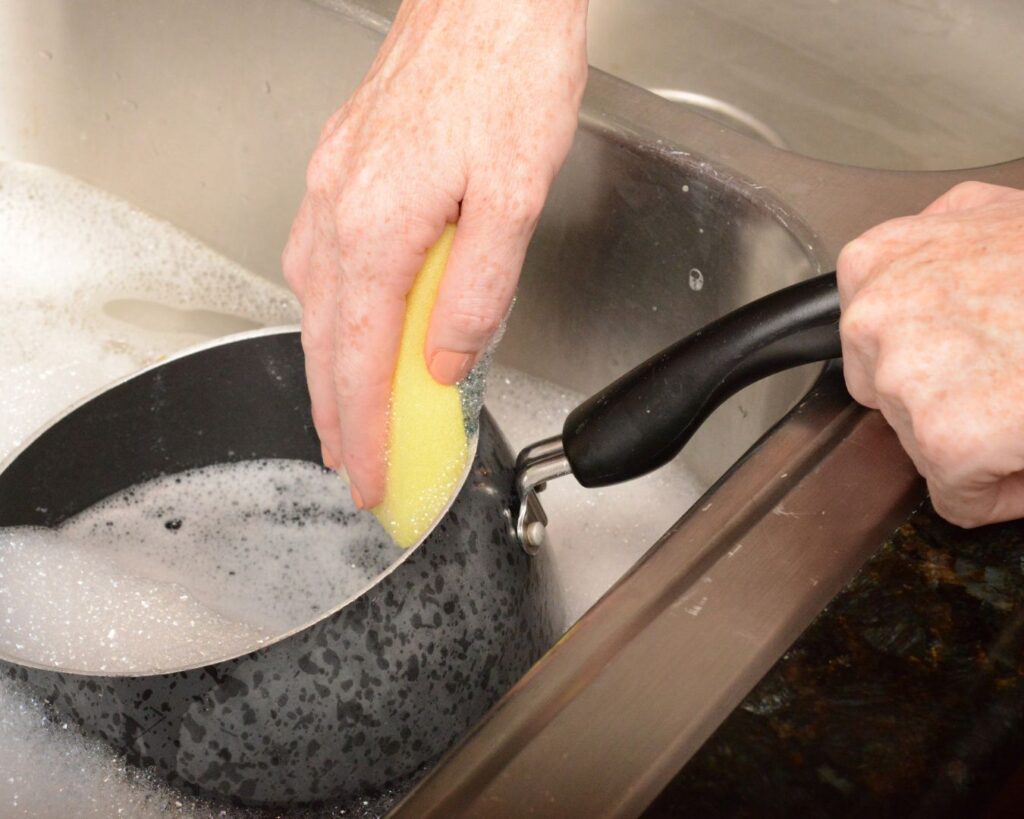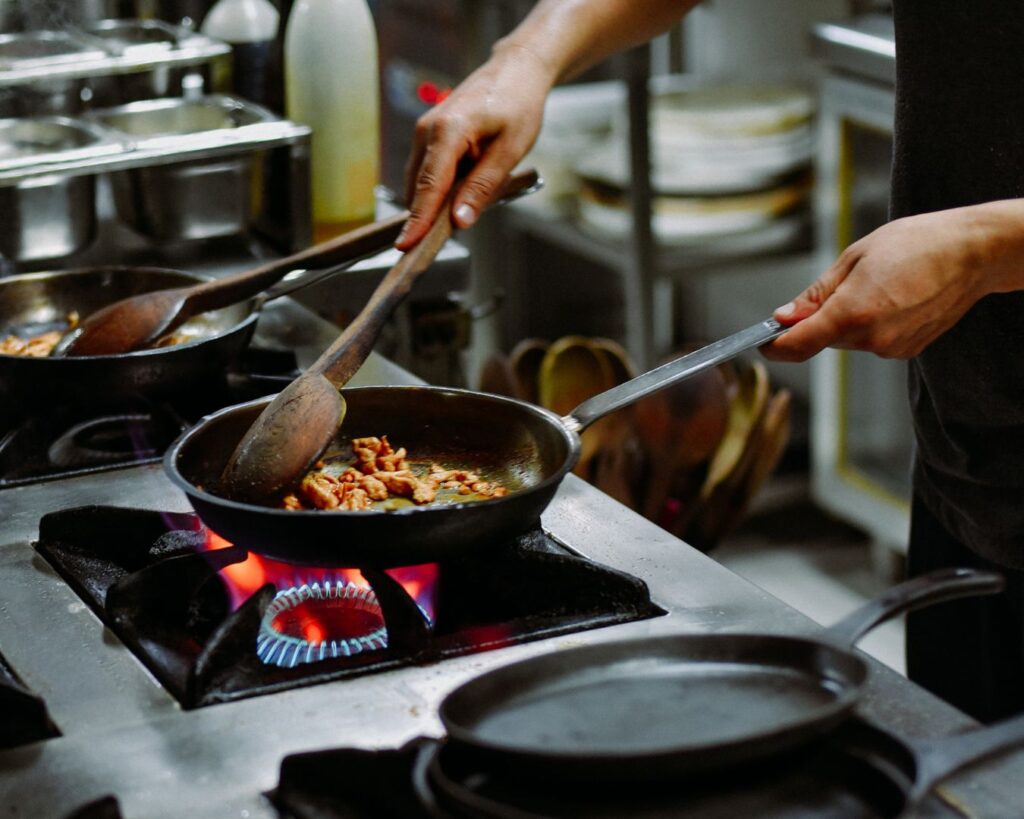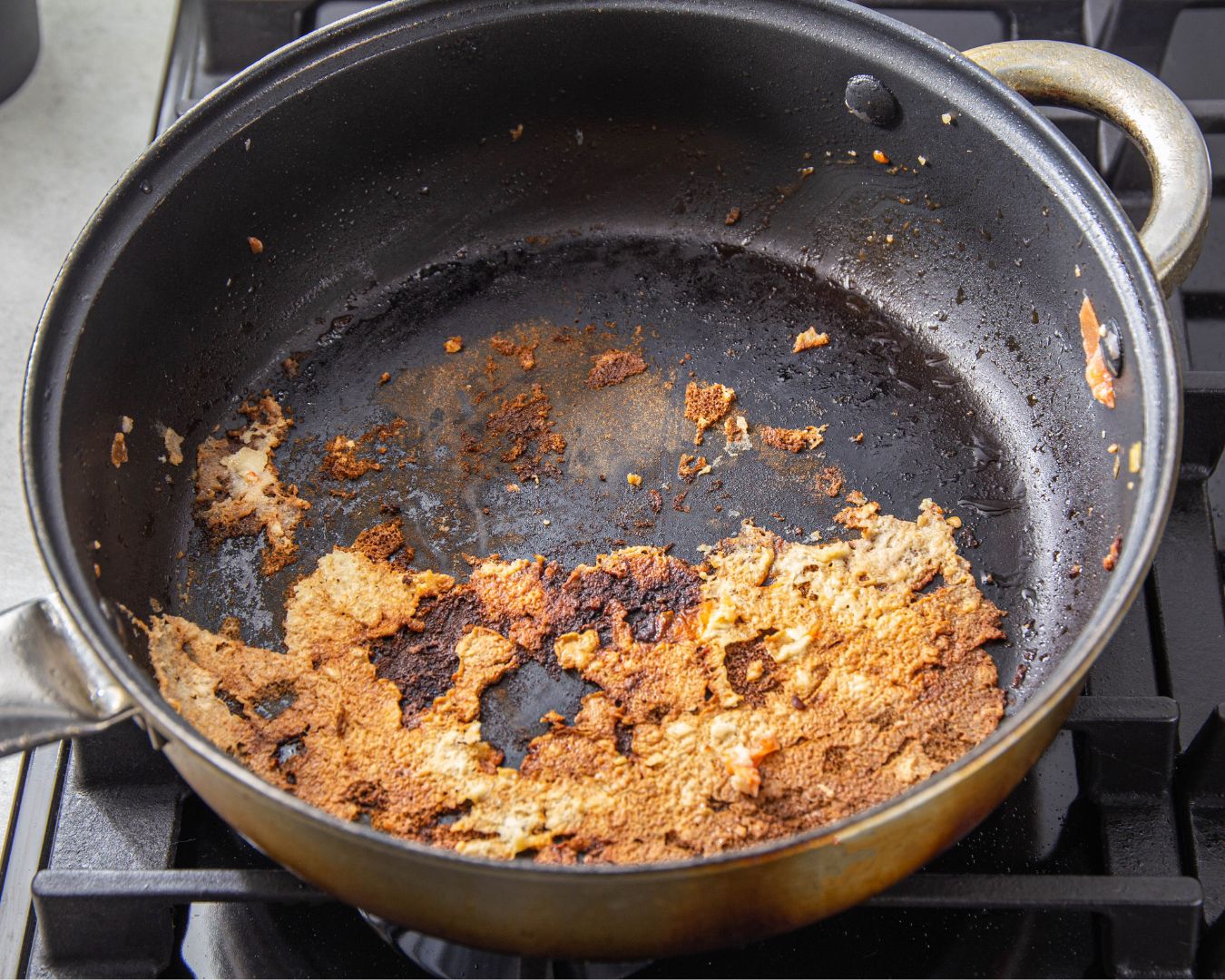How to Remove Burnt Food from Pots and Pans
We’ve all been there: a moment of distraction in the kitchen leads to burnt food stuck to the bottom of your favorite pot or pan. Not only can this be frustrating, but it can also seem impossible to clean without damaging the cookware. Thankfully, there are several effective methods to tackle burnt food and restore your pots and pans to their former glory. In this blog post, we’ll explore different techniques to remove burnt food from various types of cookware.

Understanding Your Cookware
Before diving into cleaning methods, it’s important to know what type of cookware you’re dealing with. Different materials require different care:
- Stainless Steel: Durable and versatile, stainless steel can withstand a variety of cleaning methods, including abrasive scrubbing and boiling.
- Non-Stick: Non-stick pans are delicate and require gentle cleaning to avoid damaging the coating. Abrasive tools and harsh chemicals should be avoided.
- Cast Iron: Cast iron pans need special care to maintain their seasoning. Avoid soaking in water for long periods and never use harsh chemicals.
- Enamel-Coated: Enamel-coated cookware can usually handle more vigorous cleaning, but be careful not to use metal scrapers that can chip the enamel.
Method 1: The Boiling Water and Baking Soda Method
Best for: Stainless steel, enamel-coated, and some non-stick pans.
Instructions:
- Fill with Water: Fill the burnt pot or pan with enough water to cover the burnt area.
- Add Baking Soda: Add a few tablespoons of baking soda to the water. Baking soda is a gentle abrasive that helps to lift burnt food.
- Boil: Bring the water to a boil and let it simmer for about 10-15 minutes. The heat will loosen the burnt food, and the baking soda will help lift it away from the surface.
- Scrape Gently: After boiling, use a wooden spoon or spatula to gently scrape the loosened food. Avoid using metal utensils that could scratch the surface.
- Wash and Rinse: Pour out the water and wash the pot or pan with warm soapy water. Rinse thoroughly.
Tips:
- If the food is still stuck, repeat the process or add a bit of vinegar to the boiling water for extra cleaning power.
Method 2: The Vinegar and Baking Soda Soak
Best for: Stainless steel, cast iron, enamel-coated, and non-stick pans (with care).
Instructions:
- Sprinkle Baking Soda: Cover the burnt area with a generous amount of baking soda.
- Add Vinegar: Pour white vinegar over the baking soda. It will fizz and bubble, which helps to break down the burnt food.
- Soak: Let the mixture sit for 15-30 minutes, allowing the baking soda and vinegar to work their magic.
- Scrub Gently: After soaking, use a non-abrasive sponge or a nylon scrubber to gently scrub away the burnt food. For cast iron, use a stiff brush or scraper.
- Rinse and Dry: Rinse the pot or pan with warm water and dry it thoroughly.
Tips:
- This method is especially effective for tougher burns. For non-stick pans, be extra gentle to avoid damaging the coating.
Method 3: The Salt Scrub
Best for: Cast iron and stainless steel.
Instructions:
- Sprinkle Salt: While the pan is still warm (but not hot), sprinkle a generous amount of coarse salt (like kosher salt) over the burnt area.
- Scrub: Use a cloth, paper towel, or a sponge to scrub the salt into the burnt food. The salt acts as a mild abrasive that won’t scratch the surface.
- Rinse and Dry: Once the burnt food is lifted, rinse the pot or pan with warm water and dry it immediately. For cast iron, apply a thin layer of oil to maintain the seasoning.
Tips:
- Avoid using this method on non-stick pans, as the abrasive salt could damage the coating.
Method 4: The Overnight Soak
Best for: All types of cookware.
Instructions:
- Fill with Soapy Water: Fill the pot or pan with warm water and add a few drops of dish soap.
- Soak Overnight: Let the pot or pan soak overnight. The prolonged exposure to water and soap will soften the burnt food.
- Scrub: In the morning, use a sponge or brush to scrub away the softened food. For stubborn spots, repeat the soak or use a plastic scraper.
- Rinse and Dry: Rinse thoroughly and dry the cookware.
Tips:
- This is a gentle method that’s perfect for non-stick cookware, as it minimizes the need for abrasive scrubbing.
Method 5: The Aluminum Foil Ball Scrub
Best for: Stainless steel and enamel-coated cookware.
Instructions:
- Crumple Foil: Take a piece of aluminum foil and crumple it into a loose ball.
- Scrub: Use the foil ball to scrub the burnt food from the pot or pan. The foil acts as a mild abrasive.
- Rinse and Dry: Rinse the cookware with warm water and dry it thoroughly.
Tips:
- Avoid using this method on non-stick cookware, as the foil can scratch the non-stick coating.

Additional Tips and Precautions
- Prevention: To avoid burnt food in the first place, cook on lower heat and use adequate oil or butter. Stir frequently, especially when cooking foods that are prone to sticking.
- Safety First: Always allow pots and pans to cool before attempting to clean them to avoid burns. Also, avoid using harsh chemicals or steel wool, as these can damage your cookware.
- Cleaning Cast Iron: After cleaning a cast iron pan, always dry it immediately and apply a thin layer of oil to prevent rust and maintain its seasoning.
Burnt food on pots and pans can be a hassle, but with the right methods, it’s possible to clean even the most stubborn messes. Whether you prefer the gentle soak or the abrasive power of baking soda and vinegar, these techniques will help you restore your cookware to its pristine condition. By understanding your cookware and using the appropriate cleaning method, you can ensure that your pots and pans stay in great shape for years to come.

